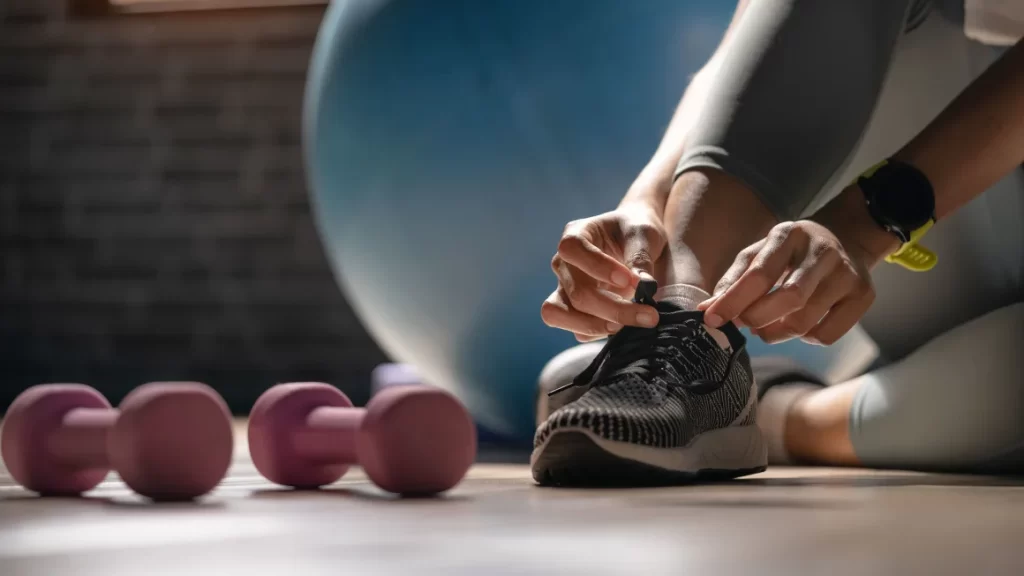You’re finally sticking to your New Year’s resolution to exercise regularly when you become sidelined by Covid-19. Or maybe you’re a seasoned fitness buff training for a marathon, then have to hit pause due to a nasty bout with respiratory syncytial virus or influenza.
No matter the scenario, the big question is how to safely reboot your fitness regimen once you have recovered.
If you had a simple head cold or 24-hour stomach flu bug, there is not too much to be concerned about. But Covid, RSV and influenza are more serious maladies that require a thoughtful approach to resuming exercise. That’s because the three are viral infections, which tend to cause whole-body inflammation, said Dr. R.J. Turner, a primary care and sports medicine physician with UTHealth Houston.
“What that inflammation can do is irritate your heart and lungs, which ultimately can affect your breathing and the way your heart beats,” Turner said. “It takes time for your body to completely recover from a viral infection.”
It can take even longer than average to be ready to hit the gym if you’re an older adult or have underlying health concerns, such as diabetes or high blood pressure. And if you already had heart or lung issues, that requires even more caution.
Another factor to consider is how long you’ve been ill and inactive. “You start to lose strength in your muscles after five to seven days of inactivity,” said Marisella Villano, a certified personal trainer and owner of Marvil Fit in Hampton Bays, New York.
Indeed, your muscles can begin to atrophy within eight hours of surgery. And being bedridden for less than two weeks can result in a 5% to 10% reduction in muscle mass in your quadriceps, according to a 2013 study published in The International Journal of Biochemistry & Cell Biology.
Planning your return
No matter which virus you had, wait at least five to seven days after recovering before packing your gym bag. You also should be able to do all of your daily activities without excessive fatigue.
“Your body, heart and lungs need to recover,” Turner said. “You don’t want to push it too early and then have complications.”
If you had Covid accompanied by heart- or lung-related symptoms such as chest pain or difficulty breathing, the American College of Cardiology recommends seeing your physician before resuming exercise. And if Covid caused you to develop myocarditis, an inflammation of the heart, the ACC guidelines say to abstain from exercising for three to six months.
Once you’re cleared to resume your workouts, take it slow and easy. Turner recommended calculating your maximum heart rate and keeping it below 70% to start, which is considered light exercise. To determine your maximum heart rate, first subtract your age from 220, then calculate 70% of that. For example, a 40-year-old would have a maximum heart rate of 180 beats per minute (220 minus 40). Since 70% of 180 is 126, a 40-year-old’s heart rate should initially stay below 126 beats per minute. You can use a heart-rate monitor or fitness watch to track your heart rate.
Villano recommended walking at an easy pace for the first 10 days post-recovery before progressing to more moderate exercise. “But don’t go back to 100% of what you were doing before you became ill,” she said. “Decrease your loads by at least 10% or 15%.”
At her fitness studio, some of Villano’s clients tried to jump right back into their workouts after a bout with Covid, despite her warning against it. The result was always the same: The overly eager go-getters fatigued earlier than previously, as their heart rates accelerated at lower workloads than before their illness. Some got lightheaded.
“I have to talk them off the ledge and tell them their gains are cumulative,” she said. “Decreasing your workload doesn’t mean you will lose all of your gains.”
Monitor how you’re feeling
As you’re slowly working back to your normal fitness routine, pay attention to how you’re feeling. Yes, you’ll likely feel some fatigue as you get back into shape. But if you feel like your heart is racing or beating irregularly, or if you have any chest pain, stop immediately and see your physician.
“The biggest thing to be concerned about are heart attacks and developing heart arrhythmias,” Turner said.
Being well-hydrated and consuming nutritious foods are also crucial, Turner said, both while you’re ill and when you’re returning to activity. That’s because your body needs energy to fight off the infection while you’re sick and later to fuel your workouts.
Should you become frustrated or down about how long it’s taking to get back in shape, remember this: Those who are physically active are less likely to become ill, and if they do catch an infection, it’s typically less severe than for someone who is a couch potato.
“At the end of the day, the healthier we are, the better outcomes we have if we do get sick,” Turner said.
— CutC by cnn.com


